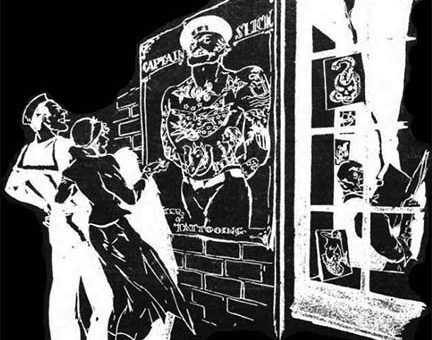
Tattoos have been around for well over five thousand years, but today I want to take a quick look at popular tattoos from the early 20th century.
1. Pricking Society Girls
At the start of the 20th century, it was women who were getting into the tattoo trend.
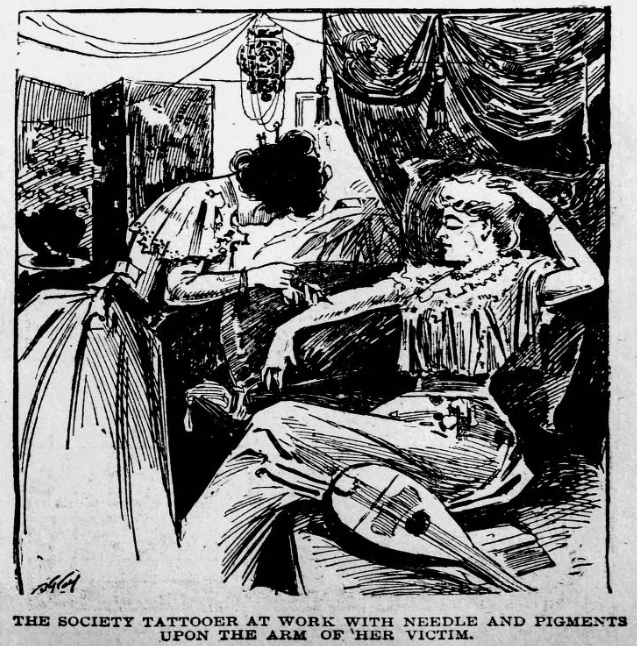
In the U.S., women referred to as “society tattooers” would visit society girls and tattoo them in their parlors. Cocaine was used as a numbing agent on the skin and a stiff shot of whiskey was often offered before the needling began.
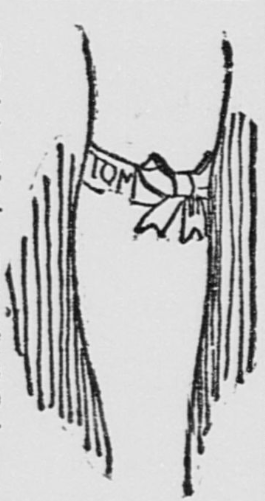
The most asked for tattoos were shamrocks, arrows, anchors, red hearts, and dogs.

In England, butterflies were the most popular tattoo among women.
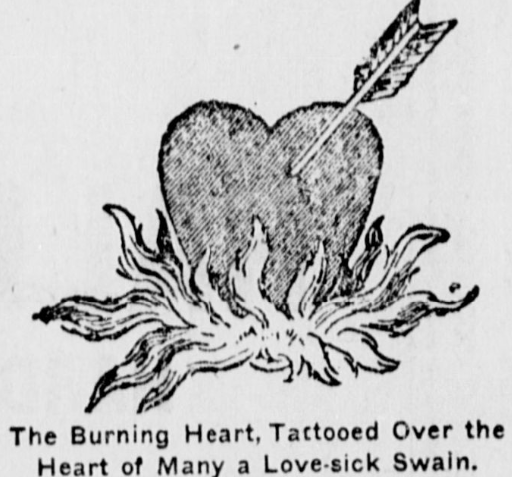
2. Sailor Tattoos
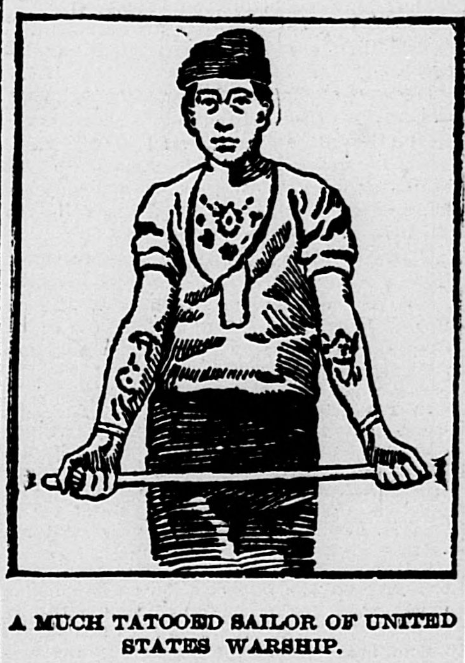
An interesting article published in 1901 was all about American sailor tattoos. It states:

“Since the war with Spain, the American sailor has appeared with a number of decorations on his arms suggesting events of those stirring times. The ships that come up the Delaware to this city often bring sailors with arms and hands so tattooed that there is little of unmarked skin visible.
“Stars, flags, coats of arms, full-rigged ships, anchors, and liberty heads are the most popular tattoo marks of the American sailor. Red hearts, pictures of some sweetheart and her name are frequently tattooed on a sailor’s arm.” [Source]
3. Traditional Anarchist Tattoos

In 1903, this illustration was published. It shows the most popular tattoos worn by anarchists.
4. WW1 German Prisoner Hand Tattoos

During World War 1, the Germans began tattooing the hands of its prisoners of war. The purpose behind the tattooing was to easily identify any escaped prisoner and place him back into custody.
5. The WWI Tattoo Plot
Hands weren’t the only things the German’s were tattooing. According to a report that came out in 1918, the U.S. intelligence bureau uncovered a tattoo conspiracy that was started by German agents.
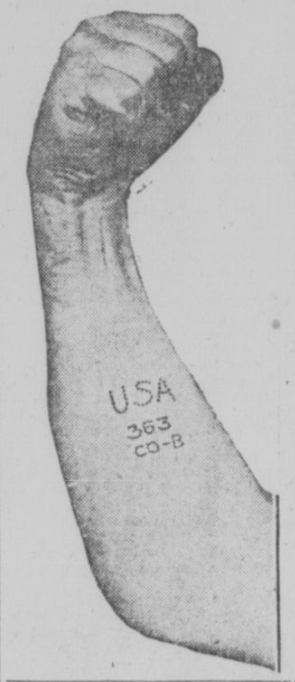
German undercover agents started a fad among American soldiers and made it a trend for the men to start tattooing their regiment and company on their right forearms.
Then, when the men were either killed or captured, the German army could keep tabs on the strength and positions of American fighting units.
The fad was quickly put to rest.
6. Brisk War Trade
As WWI continued, tattoo artists were doing their part to keep up with the demands for tattoos.
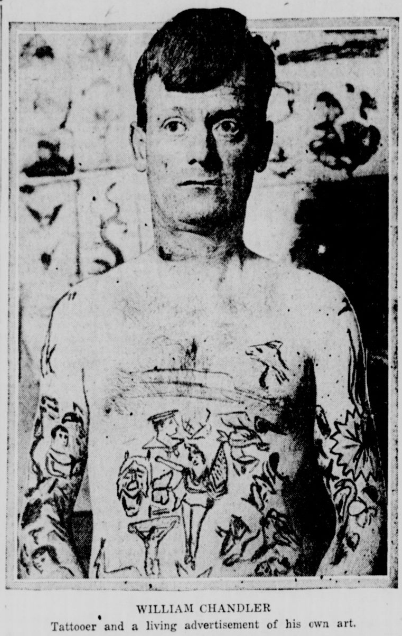
Patriotic tattoos were, of course, very popular at this time.
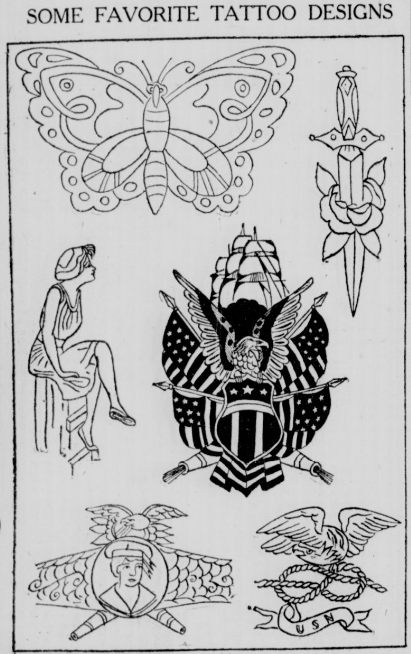
7. Regiment Tattoo On Women
Also during WWI, women were getting their husbands’ and sweethearts’ regiments tattooed on their arms to show support.
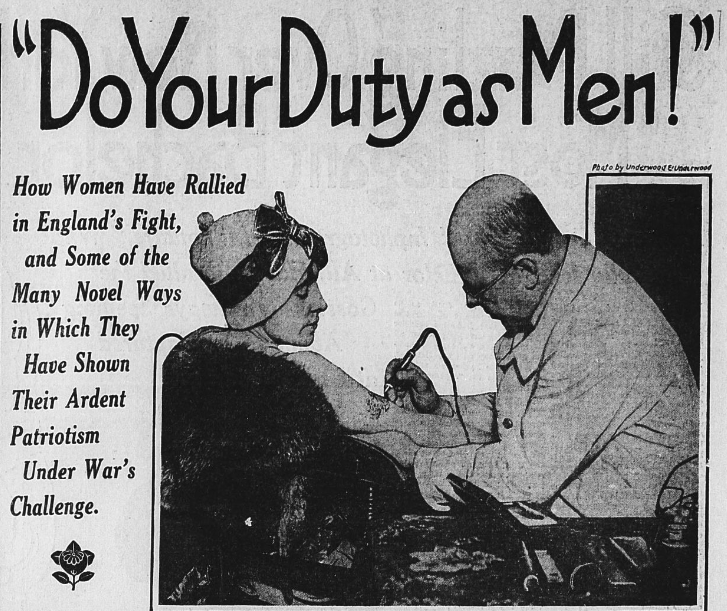
8. The Men of Devil’s Island

In the 1930s, the American press became obsessed with the French penal colony commonly known as Devil’s Island. Numerous photographs were published showing the prisoners and commenting on the men’s tattoos.
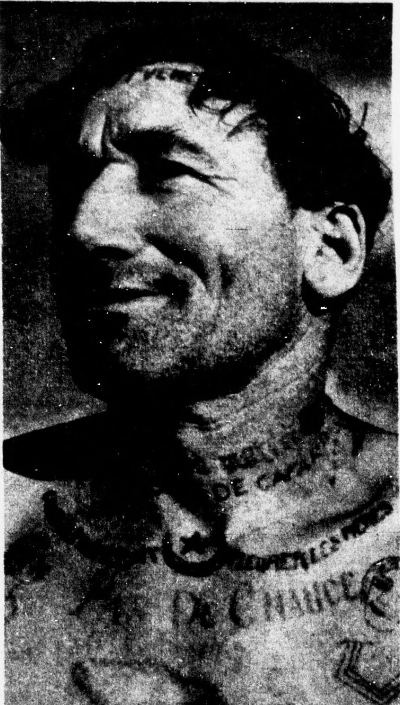
9. Practical Tattoos
In the 1930s and 1940s, tattooing took on a more practical purpose: identification.
Before the start of World War 2, it was being suggested that soldiers should get their identification numbers tattooed onto them to prevent them from becoming “unknown soldiers.”
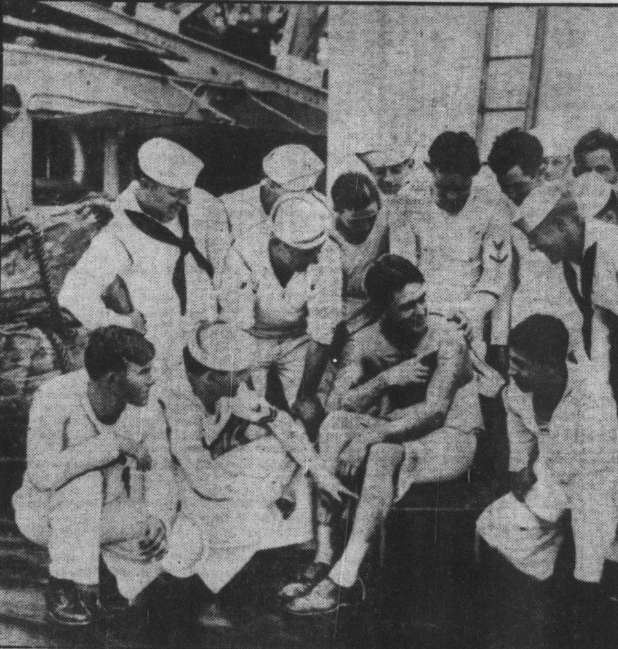
In 1948, there were reports of people getting their social security numbers tattooed on their arms for safe keeping.
Occasionally a man would turn up in the hospital with his will tattooed on his back.

There was also a case where a traveling salesman had his home address tattooed on his skin because he had suffered from amnesia.
Oddly enough, it was reported that a panorama of a cigar store was tattooed onto a man’s back and he was paid to exhibit himself at local fairs.

